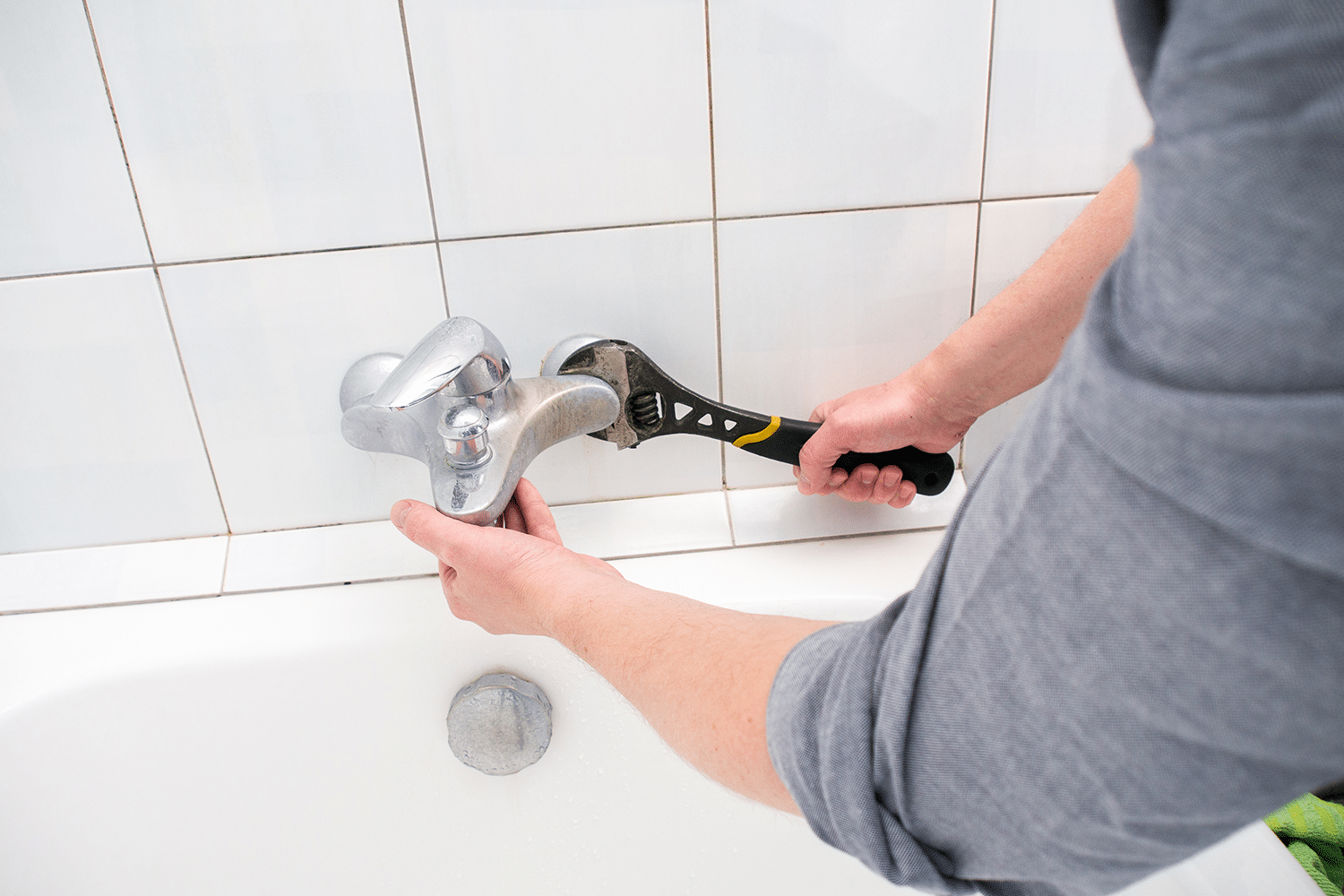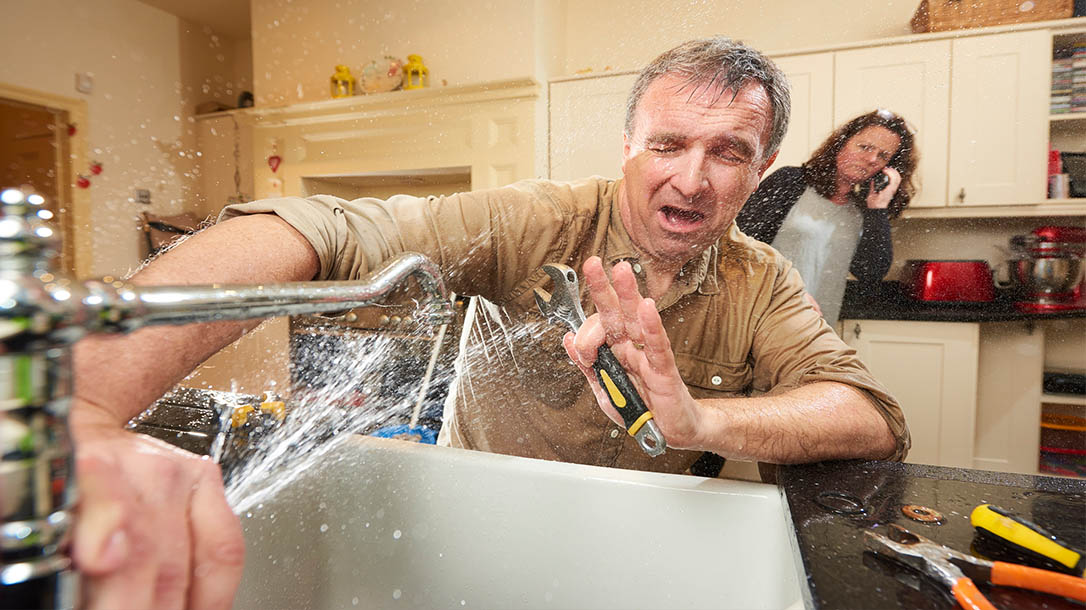The Advantages of Dealing with a Malfunctioning Faucet
The Advantages of Dealing with a Malfunctioning Faucet
Blog Article
We've stumbled on this great article about Should I Repair or Replace a Leaky Faucet? directly below on the net and thought it made good sense to quickly share it with you on my blog.

Trickling faucets may appear like a small trouble, but their effect exceeds just the nuisance of the noise. From wasting water to sustaining unnecessary economic costs and wellness threats, neglecting a dripping tap can bring about various consequences. In this write-up, we'll look into why it's vital to address this common household issue without delay and efficiently.
Wastefulness of Water
Environmental Effect
Leaking faucets add substantially to water waste. According to the Environmental Protection Agency (EPA), a solitary faucet leaking at one drip per secondly can squander greater than 3,000 gallons of water annually. This not only strains water sources yet likewise influences environments and wildlife based on them.
Financial Expenses
Enhanced Water Expenses
Beyond the environmental impact, dripping faucets can pump up water bills considerably. The gathered wastage with time converts right into greater utility expenditures, which might have been stayed clear of with prompt repair services.
Prospective Residential Property Damages
Furthermore, prolonged trickling can result in harm to fixtures and surfaces surrounding the tap. Water buildup can trigger staining, corrosion, and also architectural concerns if left neglected, resulting in extra repair work costs.
Wellness Problems
Mold And Mildew and Mold Growth
The consistent presence of wetness from a leaking tap creates a suitable environment for mold and mildew and mildew development. These fungis not just jeopardize indoor air top quality however additionally position wellness risks, specifically for individuals with breathing conditions or allergic reactions.
Waterborne Conditions
Stationary water in trickling faucets can end up being a breeding place for bacteria and other pathogens, boosting the danger of waterborne illness. Contaminants such as Legionella germs flourish in stationary water, possibly causing severe health problems when ingested or inhaled.
Do it yourself vs. Specialist Repair service
Benefits and drawbacks of Do It Yourself Repair
While some might attempt to repair a dripping tap themselves, DIY repair work come with their very own set of challenges. Without proper expertise and tools, DIY efforts can aggravate the problem or lead to incomplete fixings, extending the issue.
Advantages of Working With an Expert Plumber
Employing an expert plumber ensures that the underlying cause of the leaking faucet is resolved successfully. Plumbing technicians have the expertise and equipment to identify and fix tap issues effectively, conserving time and minimizing the threat of more damages.
Step-by-Step Guide to Dealing With a Dripping Tap
Tools Required
Prior to attempting to take care of a leaking tap, collect the needed devices, including an adjustable wrench, screwdrivers, replacement components (such as washers or cartridges), and plumber's tape.
Typical Tap Issues and Their Solutions
Determine the kind of tap and the certain concern triggering the drip. Common issues include damaged washing machines, rusty valve seats, or damaged O-rings. Describe maker directions or on-line tutorials for step-by-step advice on repair work.
Preventive Measures
Normal Maintenance Tips
To avoid trickling faucets, carry out regular maintenance such as cleaning aerators, checking for leakages, and changing worn-out parts promptly. Furthermore, consider setting up water-saving tools or updating to a lot more effective fixtures.
Importance of Prompt Repair Works
Attending to dripping taps as quickly as they're seen prevents further water wastage and prospective damage, eventually conserving both water and money in the future.
Influence On Home Worth
Perception of Well-Maintained Building
Preserving a residential property in good condition, consisting of addressing maintenance problems like trickling faucets, enhances its perceived value and desirability among potential buyers or tenants.
Impact on Resale Value
Properties with well-kept plumbing fixtures, consisting of taps, command greater resale worths in the real estate market. Resolving leaking faucets can add to a positive perception during property assessments and arrangements.
Ecological Duty
Individual Contribution to Conservation
Taking responsibility for fixing leaking taps lines up with wider initiatives toward water preservation and environmental sustainability. Every person's actions collectively make a considerable impact on preserving precious resources.
Sustainable Living Practices
By focusing on timely repairs and adopting water-saving habits, individuals add to lasting living techniques that benefit both present and future generations.
Conclusion
Dealing with a trickling tap exceeds mere comfort; it's an important step towards saving water, lowering financial expenses, and guarding wellness and building. Whether via do it yourself repair services or professional support, doing something about it to fix trickling taps is a little yet impactful means to promote responsible stewardship of resources and contribute to a healthier, a lot more sustainable future.
How to Fix a Leaky Faucet: Step-by-Step Repair Guide
A leaky faucet may seem like a simple annoyance, but if it's not fixed promptly, that leak could cost hundreds to potentially thousands. From water damage to mold, mildew, and high water bills, even a tiny leak can be catastrophic if left unattended. Damage like this can even affect the overall value of your home, so it's important to take the right approach for leaky faucet repair. You may need the help of a plumber in some cases, but we've got a few tips you can try on how to fix a leaky faucet before calling the pros.
Four Faucet Types
When you're learning how to fix a leaky faucet, the first step is knowing what kind of faucet you're working with! There are four common types.
Cartridge Faucets
Cartridge faucets come in one- or two-handled varieties. In one-handled cartridge faucets, hot and cold water combines in a single cartridge. In the two-handled versions, hot and cold water are controlled separately and mixed in the faucet.
Ball Faucets
Ball faucets have a single lever you push up and down to adjust the pressure and rotate to change the temperature. A slotted metal ball controls the amount of water allowed into the spout.
Compression Washer Faucets
They're the oldest type of faucet, but they're still used in many homes — especially older ones. Compression faucets have two separate handles that, when turned, raise or lower the washer that seals a water valve. This valve stops water from flowing through the faucet when it is turned off.
Disc Faucets
Disc faucets rarely need to be repaired due to their maintenance-free design. The water flow is controlled by two discs — the upper one raises and lowers against a fixed lower disc, creating a watertight seal. If your disc faucet starts leaking, you may need to replace the seals or clean residue buildup from the inlets.
Fixing a Leaky Faucet
Step 1: Turn Off the Water
Whether you're learning how to fix a leaky bathtub faucet or how to fix a leaky kitchen faucet, always turn off the water supply to your working area when you're fixing a leak. The last thing you want is a flood added to your list of things to fix.
Look for the shutoff valves below your sink or around the tub and turn them clockwise to stop the water flow. If your faucet doesn't have shutoff valves, you may need to turn off the water for the whole house. Check to make sure it's off by turning the faucet on. If nothing comes out, you're ready to start the repair.
Step 2: Take Apart the Faucet
How you disassemble your faucet depends on the type of fixture you have. You can use a flathead screwdriver to remove the caps on top of the handle or handles for cartridge and compression faucets. Inside, you should see handle screws. Unscrew these with a screwdriver to remove the handle.
Disc- and ball-style faucets will typically have an inlet screw near the handle, and removing that will reveal the interior of the faucet.
Detach the Valve Stem
For cartridge- and compression-style faucets, you'll see the inner valve stem or cartridge once you remove the faucet handles. If you have a compression faucet, unscrew the brass valve stem. If you have a cartridge faucet, pull out the cartridge. If your cartridge has been in place for a while, it may require some tools or extra force to remove it due to mineral deposits.
Examine and Replace Parts
Once you've removed the parts, check them out to confirm what needs to be replaced. You may see corroded rubber washers, O-rings, stems, or cartridges. On a ball-style faucet, check the seats and springs for damage.
If you need to repair a leaky disc faucet, check the inlet and seals on the lower disc.
Once you determine what parts must be replaced, visit your local hardware store. Bring the damaged parts with you to ensure you can purchase the correct components to replace them.
Clean Valves and Faucet Cavity
If you've removed a stem or cartridge, you may notice mineral buildup in the faucet's threads. Use white vinegar to clean the valve seat by soaking it for a few minutes, then scrub it away with a soft toothbrush and rinse with warm water. You can also clean the interior of the faucet in the same way.
Reassemble the Faucet
Once your faucet is cleaned and the required parts have been replaced, it's time to reassemble it. Put the pieces back together and slowly turn the water supply back on. Doing this slowly is crucial because too much initial water pressure can damage the new hardware you've just installed.
https://homewarranty.firstam.com/blog/how-to-fix-leaky-faucet

Do you enjoy more info about Leaky Faucets: Why They Happen & What to Do About Them? Create a remark further down. We would be glad to know your ideas about this article. We are looking forward that you visit us again soon. Sharing is nice. Helping others is fun. Kudos for being here. Come back soon.
Report this page